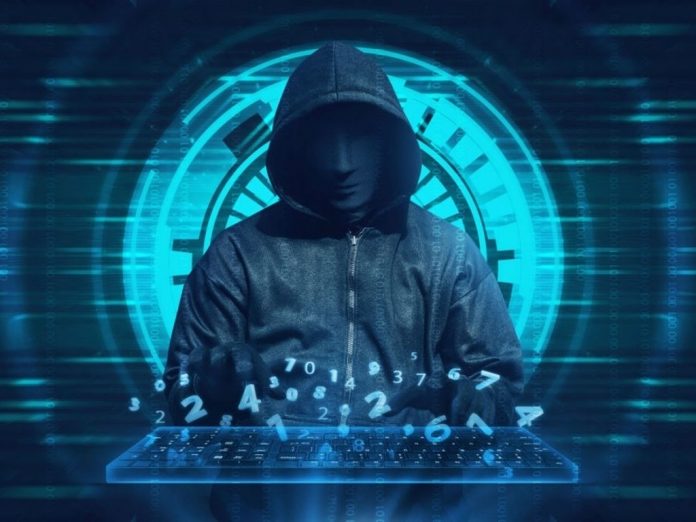This article is written by Poornima Animi, pursuing Certificate Course in Advanced Criminal Litigation & Trial Advocacy from Lawsikho. The article has been edited by Ruchika Mohapatra (Associate, LawSikho).
Table of Contents
Introduction
The usage of the internet has increased during the lockdown period throughout the world. With nowhere to go, people are at home. The use of social media is at an all-time high, with the majority being from the younger generation i.e Millennials and Gen Z. With limited digital literacy, people are finding it hard to navigate through daily life. Cyber harassment of gender minorities and minors has been a major issue during this time. In the case of minors, this also stems from the fact that they are not aware of their rights in cyberspace even if they are proficient in using the internet. In certain cases, they may also fall victim to cybercrimes such as cyberstalking, cyberbullying, child pornography, etc. This article discusses these crimes, with special reference to cybercrimes against women and an increase of the same during COVID-19. This article will also shed light on the Information Technology Act, 2000 with important steps that can be taken to prevent cybercrimes.
What is cybercrime?
Cybercrime refers to criminal activities conducted via the Internet or otherwise facilitated by computer technology, such as using online social networks to harass people or share sexually explicit photographic files. Although cybercrime is a new problem, many of the same offences that may be done with a computer or smartphone, such as theft or child pornography, were perpetrated in person prior to the computer era. This paper contains information about catfishing, stalking, child pornography and a variety of other crimes committed online.
Types of cybercrimes committed against women
Cyberstalking
Cyberstalking is one of the most common crimes committed by cybercriminals. Stalking refers to an attempt to contact/trace a person through their online details without their consent or post refusal to reveal said information. This is done through e-mails, mailing lists, hacking of personal data, picture searches etc. For the sake of understanding, we will be categorizing stalking in three ways namely email stalking/internet stalking, intimidation and physical stalking.
- Sending objectionable material: Sending obscene material, messages, photos continuously to harass the victim through emails/ social media profiles/ messaging apps.
- Intimidation: Publishing obscene material in order to blackmail, intimidate or ‘outrage the modesty’ of a woman. In such scenarios, section 354D of the IPC may be used against the criminal.
- Physical Stalking: Using the aforementioned means, criminals may also gain access to personal information like place of residence, place of work, the usual mode of transport which may later lead to physical stalking.
Revenge pornography
Revenge pornography is an illegal act that involves publishing, transmitting, creating or displaying obscene material related to a woman on the internet. The use of photoshop has added a whole new dimension to the issue. Morphed pictures and videos with the victim’s contact details are published on the internet which not only tarnishes their reputation in society but also affects their future. An increase in unwanted advances from miscreants is also noticed after such incidents.
Cyberbullying
Cyberbullying is bullying that takes place via the use of digital technology. It may occur on social networking sites, chat systems, gaming platforms, and mobile phones. It is intended to frighten, enrage, or shame people who are targeted. Mainly teenagers between the ages of 14-18 years are bullied by cybercriminals. Some of the types of cyberbullying are as follows:
1. Catfishing: Using a made-up or stolen ID to deceive other users. This is often a method employed by scammers to form a deep emotional relationship with users in order to use emotional attachment for unlawful purposes. This may often lead to ‘Trickering’ which involves gathering personal information like personal photos, documents and bank information of the users, often used to further blackmail those persons.
2. Frapping: when a person leaves their social media profile signed in and unattended, leaving it open for another person to edit their status update in a humorous or embarrassing way. This may sound harmless but can also lead to major issues when these changes are made by someone attempting to bring harm to one’s reputation.
Child pornography
Publishing, creating, viewing or displaying any obscene material involving children engaged in sexual acts is illegal in India and constitutes a serious cybercrime. Most children between the ages of 14-18 years fall prey to child pornography.
Punishment of cyber crimes against women and girls
For easy access, here is a list of punishments for cybercrimes against women and children.
Indian Penal Code,1860
Prior to 2013, there was no specific law for crimes against women through the internet. But, in the year 2013, the criminal amendment act added to the Indian Penal Code,1860 included certain sections related to cyber crimes against women under sections 354A to 354D:
| Section | Term of punishment |
| 354A – Committing acts like demanding sexual favours, showing pornography without the will of women or making sexually coloured remarks | Rigorous imprisonment extended up to 3 years or with fine or with both. |
| 354C – Commits ‘voyeurism’ defined as capturing images/ videos of women engaging in private acts and disseminating such material without her consent. | Imprisonment up to 3 years +fine for first conviction 3 to 7 years+fine for second and subsequent convictions. |
| 354D – Cyber Stalking | Imprisonment up to 3 years +fine for first conviction 3 to 7 years+fine for second and subsequent convictions. |
| 499 – Cyber Defamation | Imprisonment extended up to 2 years or with fine or with both. |
| 509 – Outrage of women modesty | Imprisonment up to 3 years +fine |
Information Technology Act, 2000
According to the Information Technology Act,2000 and its amendment, there are some of the sections talks about punishments of cybercrimes are as follows:
| Section | Term of punishment |
| 66C – Identity theft | Imprisonment up to 3 years +fine may extend to one lakh rupees. |
| 66D – Cheating by impersonation using computer resources or communication devices | Imprisonment up to 3 years +fine may extend to one lakh rupees. |
| 66E – Violation of the privacy of a person | Imprisonment up to 3 years or with a fine not exceeding two lakh rupees. |
| 67 – Publishing obscene material through electronic form | Imprisonment up to 3 years +fine which may extend to five lakh rupees for first conviction 3 to 5 years+fine which may extend to ten lakh rupees for second and subsequent convictions. |
| 67A – Publishing sexually explicit material through electronic form | Imprisonment up to 5 years +fine which may extend to five lakh rupees for a first conviction 5 to 7 years+fine which may extend to ten lakh rupees for second and subsequent convictions. |
| 67B – Publishing sexually explicit material through an electronic form that depicts children | Imprisonment up to 5 years +fine which may extend to five lakh rupees for a first conviction 5 to 7 years+fine which may extend to ten lakh rupees for second and subsequent convictions. |
How to register a complaint using the National Cyber Crime Reporting Portal?
Most women, at some point in time, have been victims of cybercrimes. But, they often do not file a complaint against that crime due to fear of social retribution or lack of awareness. The Government has initiated a National Cyber Crime Online Portal to file complaints against criminals. Such complaints may also be filed anonymously. The Government initiated this portal to create awareness about cybercrimes and also give complaints without any fear.
National Cyber Crime Reporting Portal
Government commissions and schemes that create awareness about the cybercrimes against women and children are as follows:
• National Commission for Women,
• Cyber Crime Prevention against Women and Children.
Steps to be taken to avoid cybercrimes
Avoid the mails which are unknown to you
You can find an entire series made by comedian James Veitch on YouTube about how spammers trick people and con them into believing that they have won lotteries or have been contacted by a famous person who needs money as a favour and is ready to pay a fortune in return for this small favour. His witty anecdotes are not only entertaining but also warn us against replying to emails that do not come from a familiar source.
Use two-step verification
Generally, people tend to use a single step verification for emails, WhatsApp, Facebook, etc., This verification is very easy to break through. Two-step verification gives you more protection than single-step verification. This not only protects you from hacking but also acts as a warning system in case someone whom you don’t know tries to log into your system. If anybody uses your emails, WhatsApp, Facebook, etc account from another device, it immediately warns you and asks you to verify the login activity.
Be aware of fraudulent links and websites
One must be cautious about the files, links and websites they access through their device because there are a lot of fake websites out there which intend to collect personal information or hack your computer using malware. A quick way to verify this is to cheque whether the website link starts with “https://” or not. If the website starts with “https://” then it is the original website. Sometimes we see the website starts with “http://” this is not an original one. Often this link also indicates whether the website is protected i.e whether the information entered in the website is being used for illegal purposes. We must use official websites with credible domain names. Some of the credible domain names are .com, .edu, .in, .gov, etc., however, please note that this list is not exhaustive.
Make strong passwords
- Using the same password for multiple social media platforms can be a major threat to your cyber safety. If any of the passwords is compromised, all the accounts automatically get compromised.
- Use strong passwords with a minimum of 8 characters consisting of upper and lower case letters, numbers and special characters. Don’t use your personal information like name, date of birth, nicknames, years etc. as your password. It is advisable to change user credentials every 90 days.
Update your security systems
You must keep an eye on your operating systems and antivirus software. You must update your systems and anti-virus software in regular intervals with authorised software tools like Norton, K7 antivirus software etc. Software updates have many benefits; it keeps your data secure and antivirus companies make it a point to fix many glitches and safety loopholes with each update.
Using antivirus software in itself is extremely useful as it not only keep your private data secure but also helps in improving the functioning and maintaining of your computer.
Storage of personal data like email usernames, passwords, bank accounts, aadhar numbers etc., in our smartphones, lures us into a false sense of security. It is essential to remind ourselves about the dangers of cyberspace.
Conclusion
Although cyber crimes against women and children have become a common phenomenon, they should not be normalised. India is one of the few countries to enforce an act for the prevention of cyber harassment, however, its execution is not good enough. Along with the responsibility of people to keep themselves safe, we must also note the responsibility of the government to make sure that the criminals are punished and the victims are put to justice. In crimes where marginalised communities and minors are targeted, awareness and employment of good legislation are irreplaceable.
Students of Lawsikho courses regularly produce writing assignments and work on practical exercises as a part of their coursework and develop themselves in real-life practical skills.
LawSikho has created a telegram group for exchanging legal knowledge, referrals, and various opportunities. You can click on this link and join:
https://t.me/joinchat/J_0YrBa4IBSHdpuTfQO_sA
Follow us on Instagram and subscribe to our YouTube channel for more amazing legal content.












